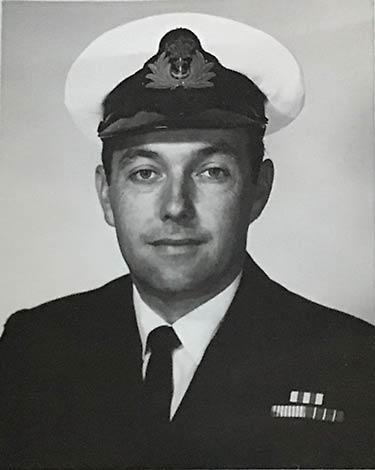
Early life
Lieutenant-Commander (Ret'd) Gordon Coon enjoyed what he calls a perfect childhood in Eston, Saskatchewan. In Grade 10, he left school for a job in New Westminster making springs for motor vehicles. But after three years of apprenticing, new shock technology was changing how cars were made. Coon sensed that it might be time to move on.
“I quit that job with the idea that I could get another one. And I couldn’t!” he says with a laugh. “I had no education, so I looked around and finally I just decided to join the Navy.”
The service would give him a decent salary, three meals a day and a place to live—all he really wanted.
Coon never thought he might go to war but it quickly became a possibility.
Korean War begins
It was early in the 1950s, and North Korea was about to invade its neighbours to the south, setting off a conflict that would rage for the next three years.
More than 26,000 Canadians would serve on land, at sea and in the air during the Korean War. Among them, Able Seaman Gordon Coon.
Within months of completing basic training, Coon was ordered to join HMCS Crusader in Korea where he would spend the next six months.
He came back in June 1953. In the fall, he was back on board, on his way to war once again.
As a young twenty-something, he had few concerns about it.
“I thought it was great! It’s not like the soldiers on shore, carrying rifles around and getting shot at and shooting back. Our job was mainly to patrol the coast. We supported some landings, stopped junks carrying supplies to North Korea, and we bombarded trains that were running down the Korean coast.”
Train buster
In the Korean theater, HMCS Crusader established a reputation as a “train buster,” destroying four North Korean trains, more than any other single ship in the conflict.
“We would sit off-shore, going slow up and down, trying to hit the trains. And we did a pretty good job of it.”

Return to Canada
Coon finally came home for good in 1954, staying on Crusader until the ship left for Halifax a year later. By then a Leading Seaman, he stayed behind in Esquimalt to take some courses and continue his naval training.
He would spend the rest of his military career crisscrossing Canada, taking on new roles in new places every few years or so.
“We moved around a lot. It makes it hard on the children and the wives,” he says. “It’s a hard, hard life for them.”
It was while he was Deputy Administrator of the Royal Military College in Kingston that Coon and his wife Elsie finally decided to call it a career after 28 years of military life.
“We were sitting at both ends of the dining room table on Christmas Day and we said ‘what are we doing here?’ and I put in my resignation.”
Gordon Coon retired in 1978 as a Lieutenant-Commander and settled in Edmonton, Alberta, where he has lived ever since.
As a Veteran of the Korean War, he is one of Canada’s Faces of Freedom.